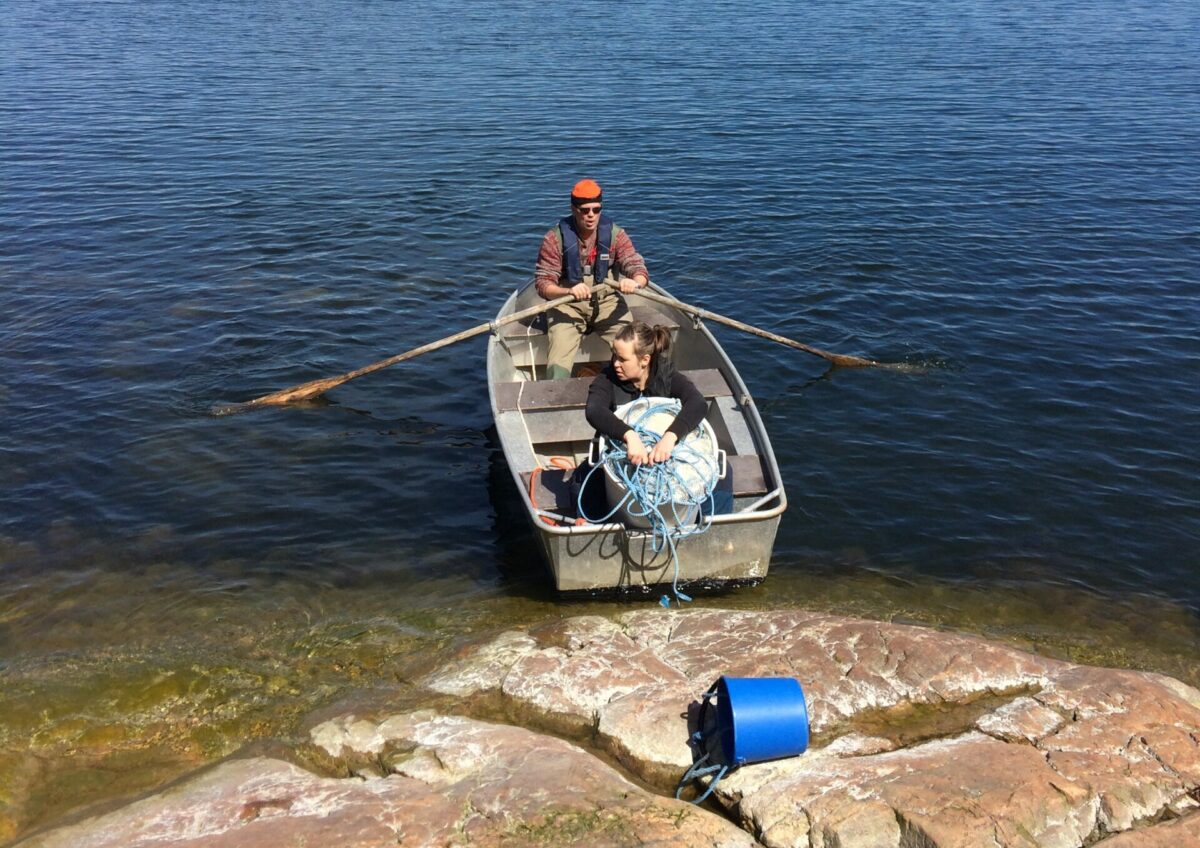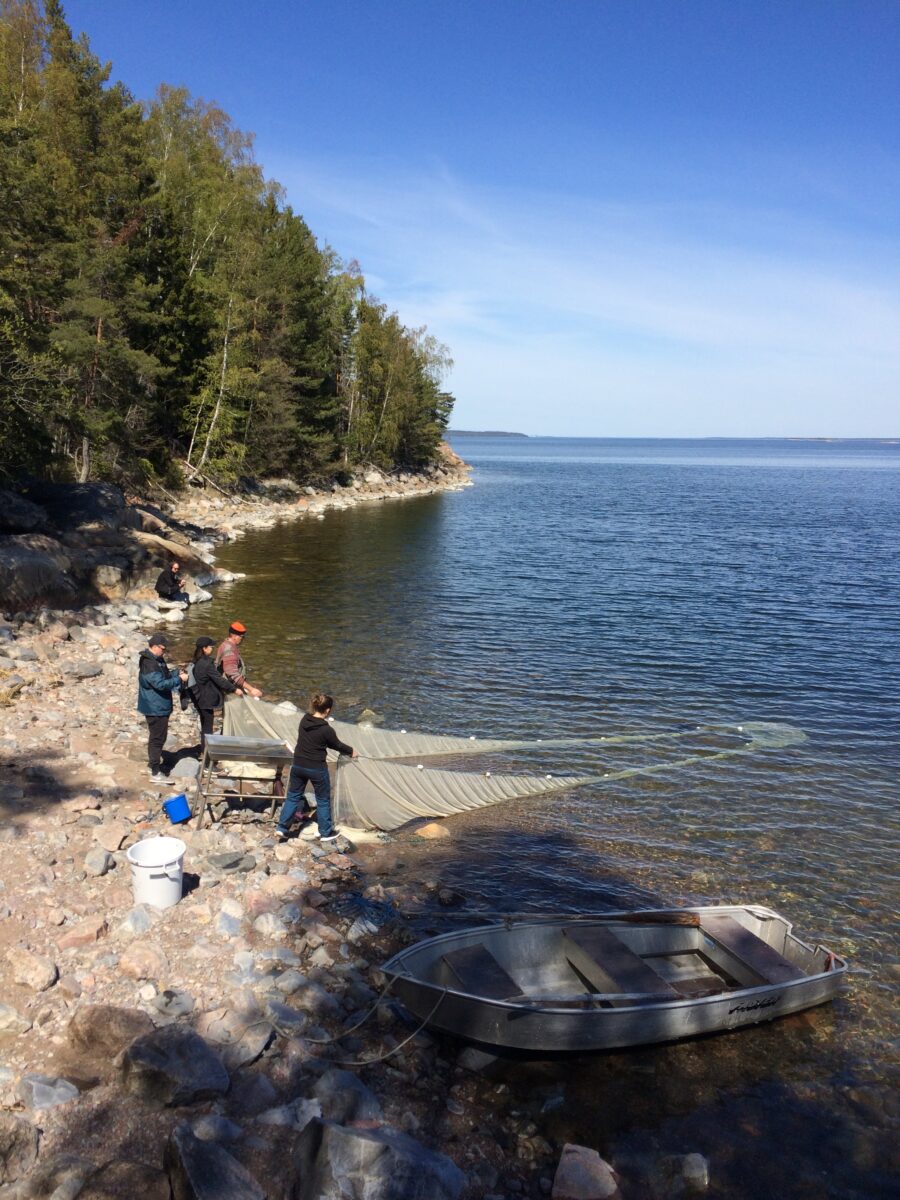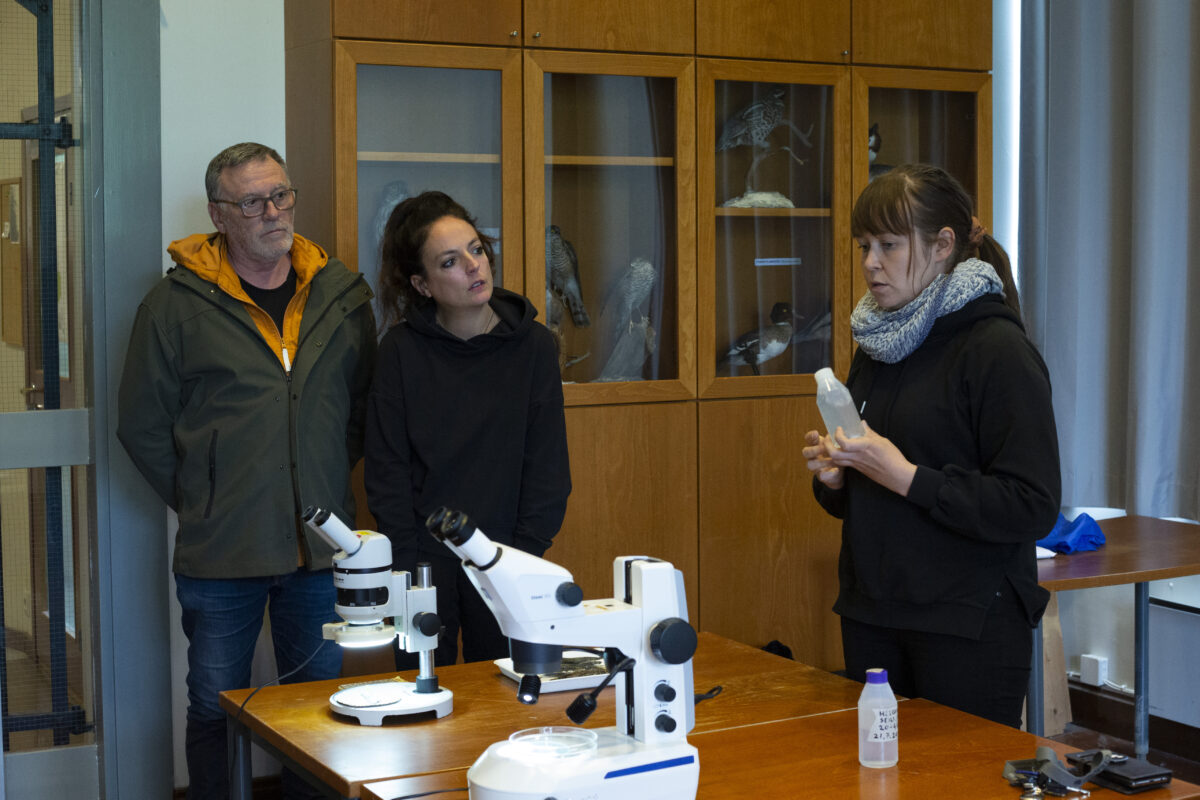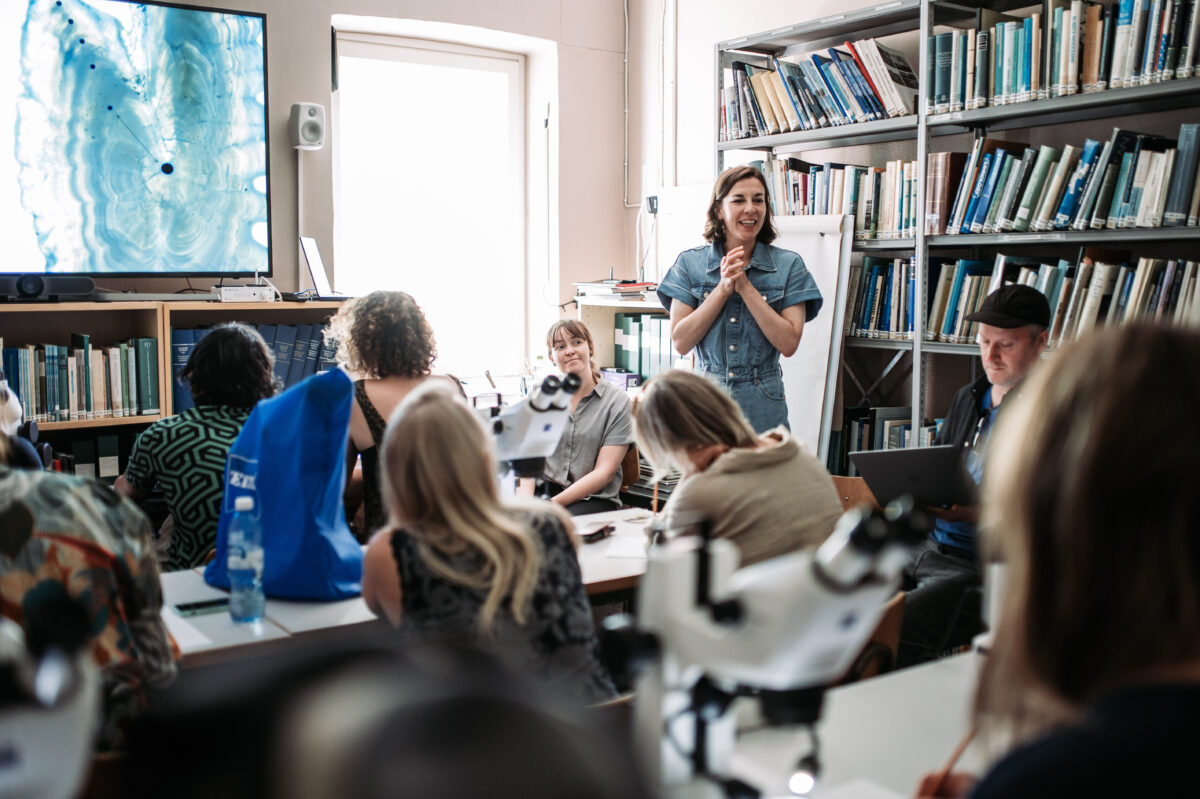Interview with marine biologist Katja Mäkinen
Katja Mäkinen is a postdoctoral researcher in marine biology at the Archipelago Research Institute on Seili, where she has been conducting ongoing research into the Baltic herring populations. As a scientist, she has been collaborating with and opening up her research to artists and audiences participating in CAA’s Spectres in Change project. In 2022, Katja collaborated with Matterlurgy to deliver the public workshop Otolith Reading as part of NPT x CAA How do you know what you know? Exercises in Attentiveness I, as well as with Arja Renell for the Stressed Herring event. She recently reflected on her work at the Field Casting discussion held at Titanik Gallery. Selina Oakes interviews Katja to find out about her approaches to and findings on the Baltic Sea ecology, as well as her experiences working with artists.
CAA: What are you currently working on? Can you talk a little about your current research?
Katja Mäkinen: I’m a postdoctoral researcher and I’m currently working on a research project that studies the variation and significance of iodine in the Baltic Sea environment and in key species such as the Baltic herring (Clupea harengus membras) and bladderwrack (Fucus vesiculosus). The availability and significance of iodine is poorly studied in the Baltic Sea even though iodine is an important building block for thyroid hormones and thereby can yield effects on, for example, species reproduction and growth. A major aim of the project is to increase our understanding of how climate change has impacted the availability of iodine in the ecosystem in recent decades. The project is going into its third year and various types of experiments and analyses have been conducted to meet the goal. Recently, we’ve analysed iodine levels in Baltic herring otoliths (ear bones) and explored how the thyroid hormone levels in the Baltic herring ovaries vary between the fish living in the southern versus the northern regions of the Baltic Sea.
CAA: What has working with artists been like for you? Has it brought something new to your own ways of working?
KM: Working with artists have been fruitful in many ways. For instance, it has provided a way to share our research findings to the general public in ways that could not have been achieved by us researchers alone. In many occasions, the conversations with artists have also challenged my own thinking and enabled me to think about the process of my own work from new perspectives.
CAA: You have been producing research with the Archipelago Research Institute in Seili for several years now. In your opinion, what is important about site-sensitive and field-based work?
KM: My research aims to understand how the climate change and also other anthropogenic impacts affect the Baltic Sea environment. In the Baltic Sea a lot of research has been conducted on this topic, but we still lack information on the impacting mechanisms for many species. To understand the natural environment, site-sensitive or population-specific information is often also needed as the environmental conditions can vary between the sub-regions of the Baltic Sea. Many of the environmental and biological parameters I’ve studied also show large seasonal and inter-annual variation, so field data that is collected consistently at regular intervals is crucial for our understanding. Each collected data point provides a situational snapshot that, with enough time (often years or even decades) and in comparison to other similar datasets collected in different regions, enables us to establish baselines, determine trends and assess the effects of anthropogenic influences.
CAA: Can you describe some of the key changes that you’ve observed in the Baltic Sea in recent years?
KM: The environment of the Baltic Sea has experienced many changes in the past decades. Of these, climate-induced changes in water quality as well as eutrophication are considered to be the key factors affecting biodiversity in the Baltic Sea. The at-sea monitoring we’re conducting at Seili focuses on sea water quality (i.e. salinity, temperature) and plankton community composition and abundance. In addition, the traits of the Baltic herring spawning in the archipelago are monitored annually. From those datasets, we’ve observed how the changes in salinity level and the increase in water temperature have affected the zooplankton species composition by decreasing the abundance of marine species, for example.
CAA: You have worked closely with docent Marjut Rajasilta at the Archipelago Research Station for numerous years. How important has your relationship with Marjut been – what have you learnt in working across generations, how has your thinking changed, and what are you bringing forwards into your teaching with the next generation of marine scientists?
KM: For all young scientists, mentoring offered by senior colleagues is crucial in learning the tricks of the trade. In the Baltic herring project, a lot of information has been gathered in the past 40 years and thus the guidance offered by Marjut and by other colleagues has been instrumental for learning and for the research as well. All research projects with some exceptions are a team effort and I’ve found that the greatest outcome can be achieved by bringing people with different skills and knowledge bases together. Naturally, I wish to also convey the lessons I’ve learned to my own students so that they don’t have to “reinvent the wheel” but can focus more on furthering our understanding of the natural world.
CAA: What would you like to see happen at the station in the future, in terms of both scientific research and art-science collaborations?
KM: The Archipelago Sea is in a dire state due to eutrophication and other environmental issues. As a result, we need research and environmental monitoring to find effective ways to improve the situation and also monitor the effects of environmental restoration projects. Through my own work, I wish to enhance the development of research conducted at the station so that we’re able to provide as much useful information as possible not only for the scientific community but also to stakeholders and others as well. Sharing information about the archipelago and the Baltic Sea – the positive as well as the negative – with the general public through art-science collaboration has proved to be a valuable step in this process. The island of Seili – along with its history, tourism and research – acts as a natural hub/platform for these activities.




